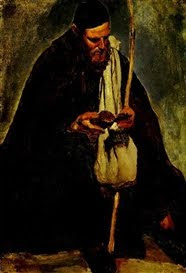"The idea of reading something quickly would be incomprehensible to a medieval monk or nun, for reading was sacred. At Lent, each would be given a book, which was to be contemplated throughout the year, not only while reading but also while he or she tended bees, or hoed the garden, or kneaded bread. “Some part of your daily reading should also each day be committed to memory,” instructed William of St. Thierry, “taken as it were into the stomach, to be more carefully digested and brought up again for frequent rumination.” Of course, the murmuring of innumerable readers could be a distraction. In his “Rule’’ St. Benedict urged, “if, perhaps, anyone desireth to read for himself, let him so read that he doth not disturb others.” Generally, in the monasteries each monk retired to his own study in the cloisters – a carrel, meaning a ring, a dance, a song, Stonehenge. A garland made of one’s own voice."
(Via Tim Carmody) (Via Digitizd.)

No comments:
Post a Comment